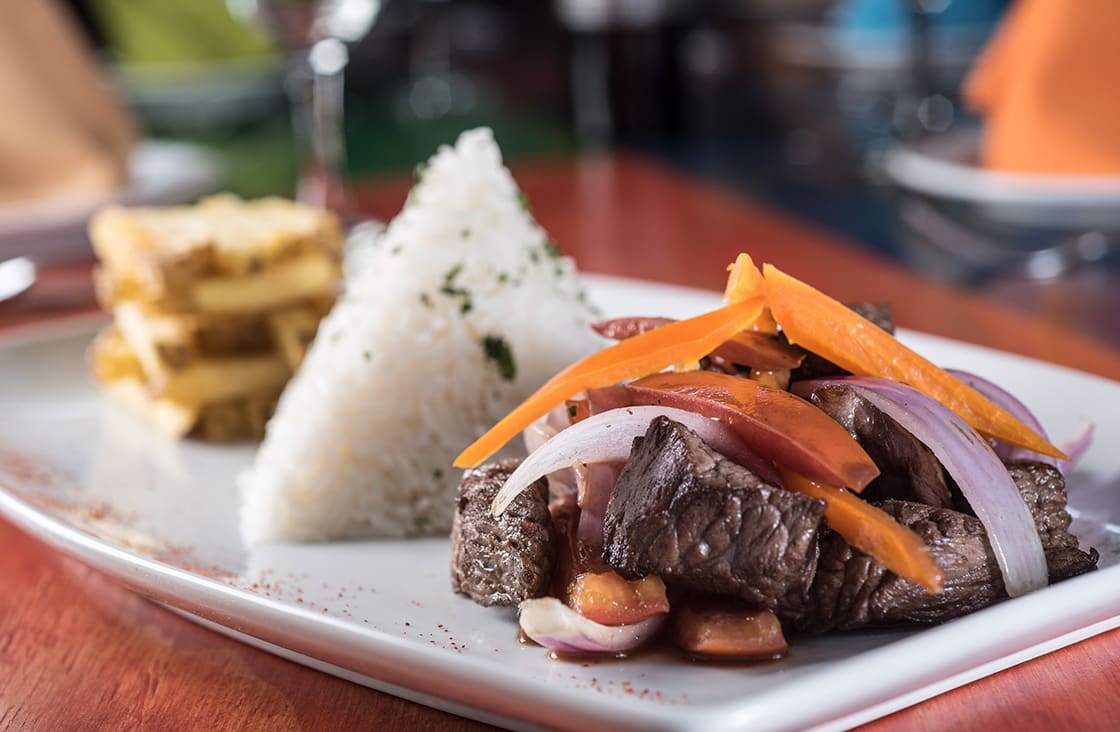
One of the strongest arguments in favor of vacationing in South America is to have the chance at sampling its fascinating specialty dishes high in colors and flavors. The cuisine has numerous influences, due to the ethnic fusion of the continent. The most characteristic and representative influences are Native American, but also African, Spanish, Italian, Portuguese, and South Asian.
Traditions, ingredients, and techniques vary greatly based on the distinct regions, and each country proudly boasts its food to be the best on the continent. In the interests of equality, we haven’t ranked the dishes – we’ll let your tastebuds decide – but we have listed the best dish from each country featured.
Read on for a list of the most famous South American foods, specialty cuisines, and national dishes to try from Argentina, Bolivia, Brazil, Chile, Colombia, Ecuador, Guyana, Paraguay, Peru, Suriname, Uruguay, Venezuela.

Asado Argentino
Asado is both a gathering around a barbecue with friends and a method of grilling; a multi-step affair that often lasts several hours. Expect to find copious meats − beef, pork, ribs, sausages, blood sausages, and sweetbreads hot off the fire. This is the nation’s traditional dish, and surely a strong reason so many people vacation in Argentina.
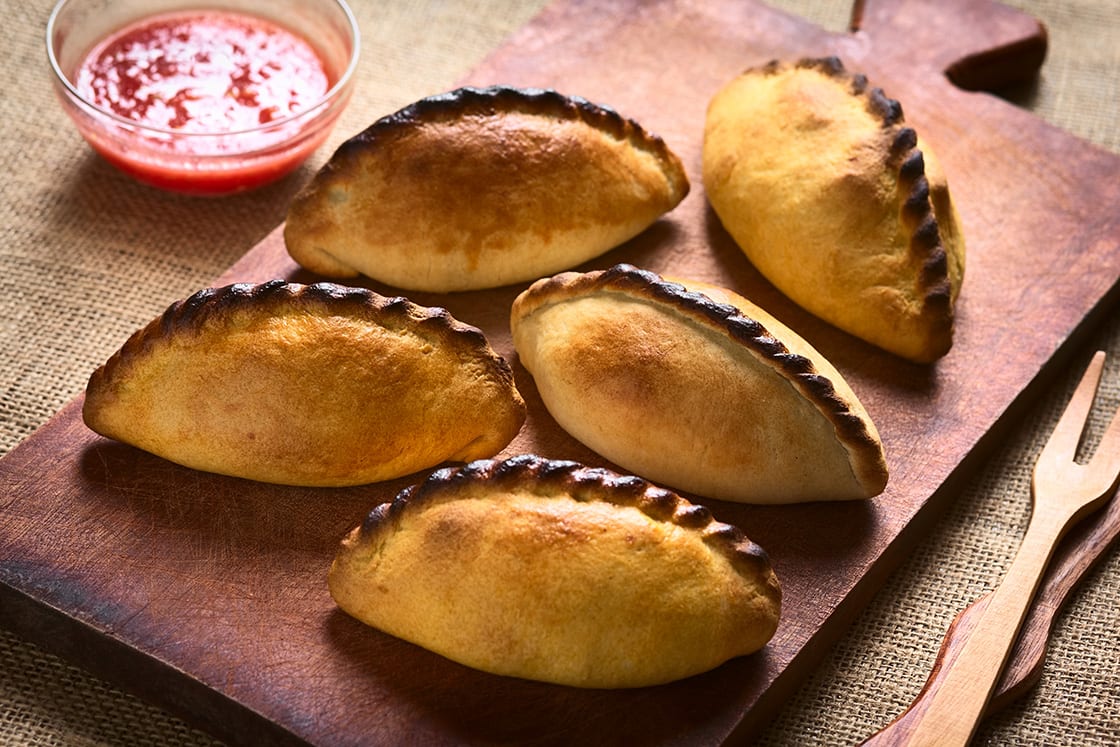
Empanadas Salteñas
Salteñas are savory pastries filled with beef, pork, or chicken mixed in a sweet, slightly spicy, or very spicy sauce, and sometimes also containing peas, potatoes, and other ingredients. They are typically eaten as a morning snack, a favorite for vacationers in Bolivia prior to setting out on an excursion. The best ones are filled with a sweet, salty, spicy, chunky soup. The dough is sweet and golden in color, firm enough to hold but chewy enough to easily bite into.

Feijoada
If vacationing around Brazil one must try the most famous of all Brazilian dishes, Feijoada is eaten in every corner of the country. It comes from the word feijão, which is the Portuguese word for beans. This rich, hearty stew consists of black beans cooked with different cuts of pork, supplemented with tomatoes, cabbage, and carrots to round out the flavor. Traditionally, it’s made with slow-cooked offal such as trotters and ears. Brazil’s national dish is served with fried kale mixed with bacon bits, rice, farofa, which is toasted cassava flour, and a slice of orange.

Cazuela Chilena
Cazuela is a popular stew made with peppers, quinoa, chili, corn, potatoes, and chicken or other meats such as pork, turkey, or beef. Some hearty cazuela recipes include rice or noodles. One of the most important facts about Chilean cazuela is that it is made by cooking all the ingredients separately and then uniting them when served. The stew gets its name from the cazuela pot, which is what it’s cooked in. A particular favorite for travelers after a day out touring Torres Del Paine, the cazuela is typically eaten by consuming the liquid stock first, then eating the meat and the larger vegetables, such as the potatoes and pieces of squash and carrot, last of all.

Bandeja Paisa
Bandeja Paisa is considered to be the national dish of Colombia. It originates from the Antioquia region of Colombia in the northwest of the country. This very high-calorie, hearty plate of food contains a variety of components individually positioned on the Bandeja (tray or platter). The main characteristic of this traditional dish is the generous amount and variety of food, which typically includes white rice, red beans cooked with pork, fried egg, black pudding, ground meat, avocado, hogao sauce, plantain, arepa, and lemon.

Encebollado
Encebollado is the national dish of Ecuador, a fish soup characterized by a large number of onions. Very useful in curing hangovers, the dish is made with fresh tuna meat, cassava root, tomatoes, onions, coriander, and various spices. Tomatoes, onions, chili, coriander, and cumin form a pungent mix and a base for the soup, which is called sofrito, while pickled onions go either on top of encebollado or into it, giving it its name, which literally means onioned. This is a dish frequently offered in our Galapagos vacation packages, where fresh seafood is readily available.
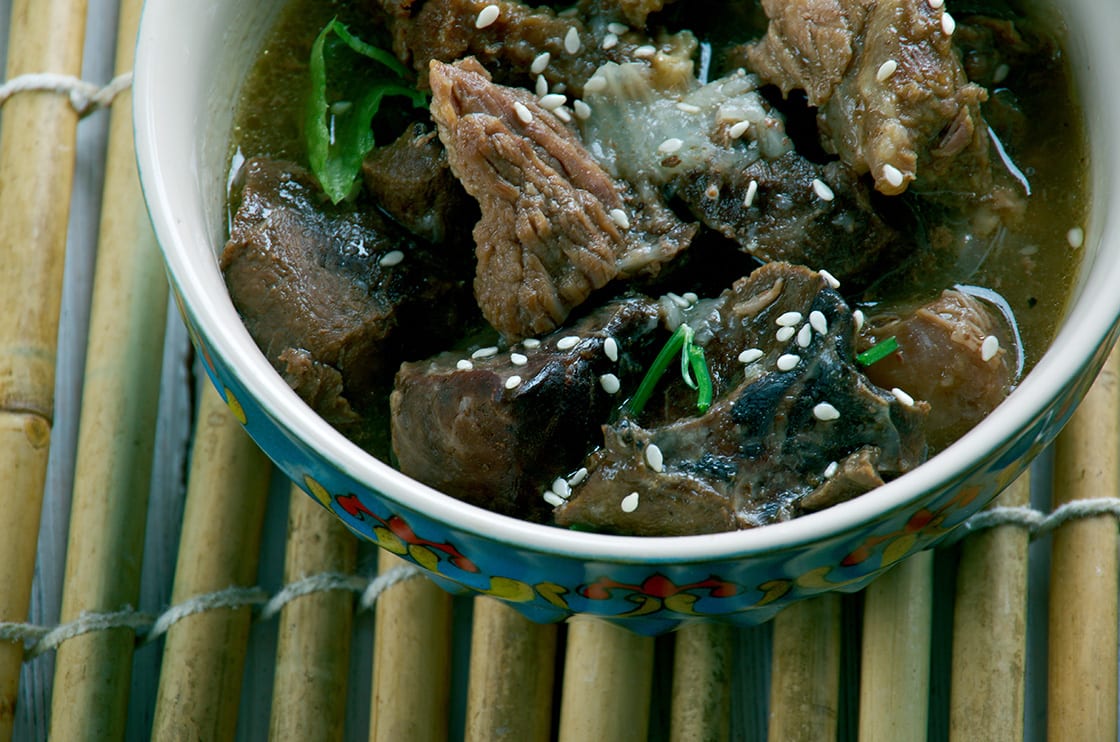
Pepperport
Pepperpot, the National dish of Guyana, is simply the bitter-sweetest, warmest, stickiest pot of stew you will ever taste. It has a taste like none other, which is all down to one main ingredient, Cassareep, a black liquid derived from the cassava root. In addition to cassareep, this stewed meat dish is strongly flavored with cinnamon, and other ingredients, including Caribbean hot peppers. Beef, pork, and mutton are the most popular meats used, although sometimes chicken might make an appearance. Pepperpot is served with dense Guyanese-style homemade or home-style bread, rice, or roti. It can also be served with boiled vegetables such as cassava, eddoes, sweet potatoes, and green or ripe plantains. This dish is usually reserved for special occasions because it needs to cook for several hours, and is mostly eaten on Christmas Day.

Sopa Paraguaya
Although sopa translates to soup, this traditional Paraguayan dish does not even resemble it. In fact, it is a type of thick cornbread flavored with cheese and onions and often baked in the drippings from a roast chicken − something like a Latin American Yorkshire pudding. One of the national dishes of the country, Sopa paraguaya is a staple during special occasions or festivities. It’s traditionally eaten as an accompaniment to soups or barbecued meat, but cornbread is also a very common breakfast accompaniment or afternoon snack.

Ceviche
One of the best foods in South America, Ceviche is a popular seafood dish, which got its start in Peru but has become widespread throughout the coastal areas of the continent. Fresh, raw seafood − often white fish − is cured in fresh citrus juice, most commonly lemon, lime, or Seville orange, spiked with some heat from chili peppers, ají, or other seasonings and garnished with thinly sliced red onion and cilantro. If going to Peru for vacation, we recommend spending a little time in the coastal capital city of Lima, which is known for having some of the best Ceviche restaurants in the world.
This dish is one of the most famous and distinctive in Suriname, and is cooked at celebrations, particularly during birthdays and special occasions. While potatoes don’t grow very well in Suriname, pom makes good use of the country’s own indigenous root vegetable, known as the tayer or pomtayer, which is combined with chicken and citrus juice and then baked in the oven.
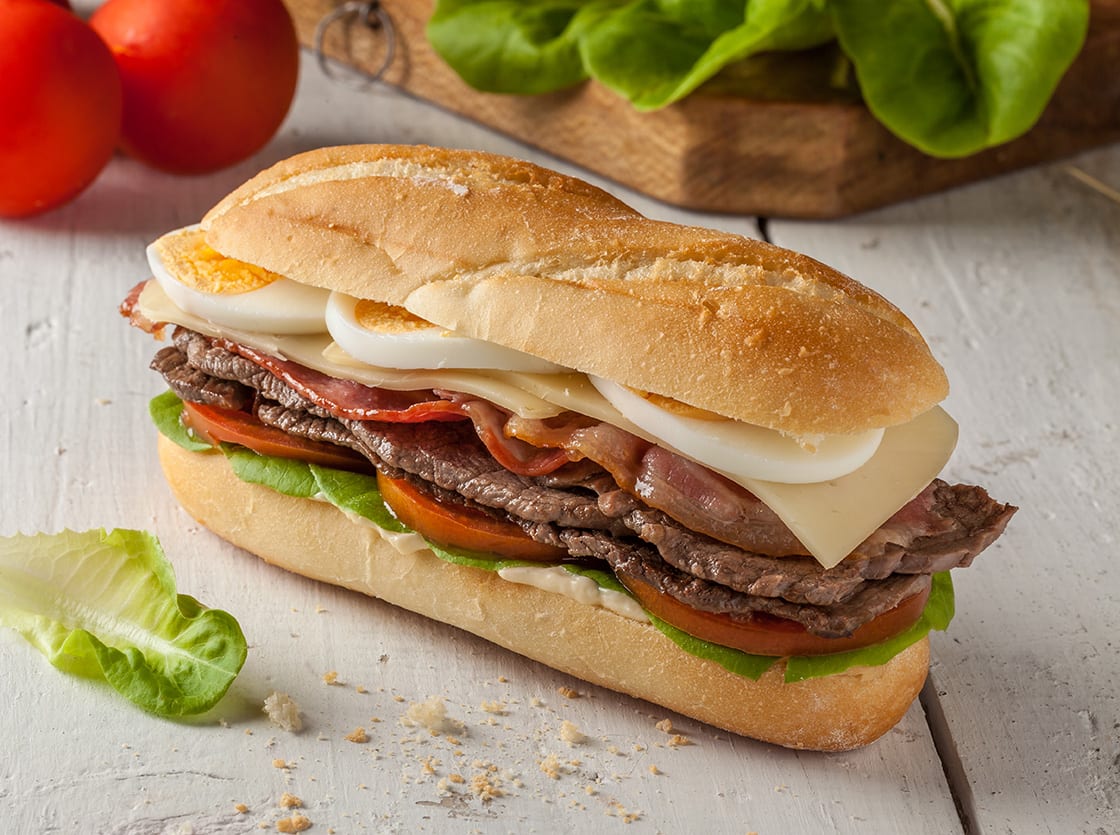
Chivito
The chivito, which translates as “little goat”, is a serious sandwich filled with meat. Its importance in Uruguay is on a par with hamburgers in the United States, fish and chips in the U.K., the Cuban sandwich in Cuba, and steaks in Argentina. This sandwich is not for the faint of heart or appetite, either. The star ingredient is a slice of churrasco, which is thinly sliced grilled beef. This is topped with slices of ham, bacon, lettuce, tomato, melted mozzarella cheese, and a fried egg.
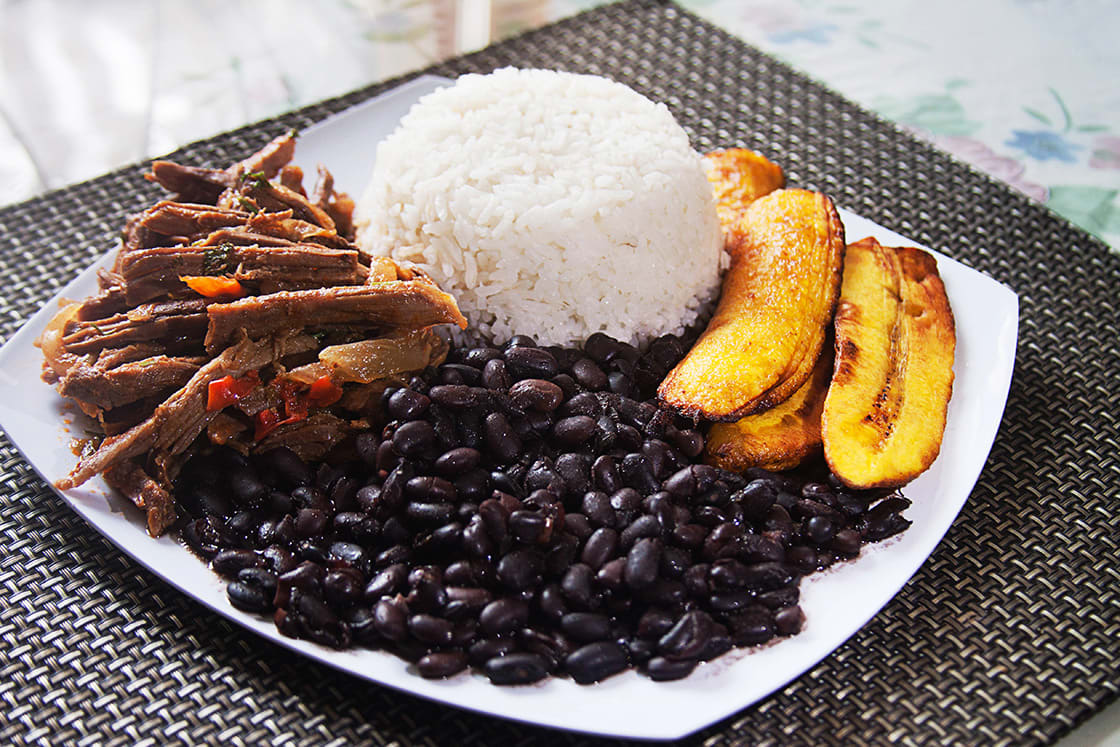
Pabellón Criollo
Pabellon criollo is the traditional beans and rice dish of Venezuela. Black beans, known as caraotas negras, and rice are accompanied by tender slices of flank steak that have been cooked with tomatoes. The name pabellón means flag, and the dish is arranged on the plate so that the red tomatoes and steak, black beans, and the white rice resemble the three stripes of a tri-color flag. The dish is served with slices of fried plantain on the side and/or a fried egg on the top.
While Rainforest Cruises aim to provide accurate and up-to-date information, we make no representations as to the accuracy or completeness of any information herein or found by following any link on this site. Rainforest Cruises cannot and will not accept responsibility for any omissions or inaccuracies, or for any consequences arising therefrom, including any losses, injuries, or damages resulting from the display or use of this information.




